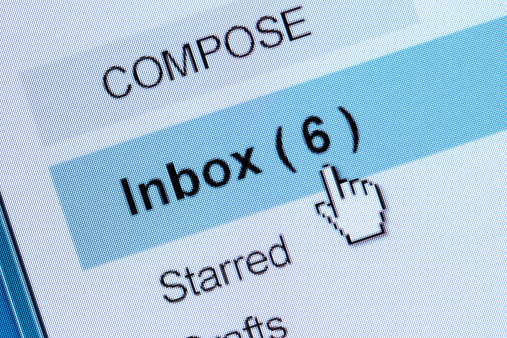Emails can be a distraction, and constant email checking diverts attention from important tasks.

While it may not seem readily apparent, each time that an employee is interrupted by a new email alert, productivity levels decrease and negatively impact overall business performance. In fact, poor email management costs businesses approximately $650 billion dollars each year.
Regain control and minimize your losses by following 11 basic steps:
- Limit your emails to one topic. Simple emails are more likely to receive a response since people tend to reply only when they have the answers to all of the questions.
- Limit yourself to 5 sentences. The most effective emails provide answers to the following questions: Who are you? What do you want? Why are you asking me? Why should I do what you’re asking? What is the next step? Including just enough details to cover these questions will enable you to focus on what’s important and allow the recipient to quickly make a decision.
- Use the subject line effectively. Too often, the subject line is underused or altogether neglected. Adding a verb, such as approve or review, will help spur a response by signaling to your recipient what needs to be done. Ensure that the subject is search-friendly so that you’ll be able to find the email easily, should you need to refer to it again.
- Prepare several email templates. Email templates are essentially shortcuts that allow you to save time by avoiding unnecessary repetition. Use templates to quickly address frequent or similar questions. If you need assistance with email template writing, you can use the Google Labs “Canned Responses” option.
- Set aside a time. Designate a time for checking emails and stick to it. Restrict yourself to checking your email no more than 4 times each day and for no more than 45 minutes during any session. Be certain to disable email notifications and set a timer. You’ll quickly notice how much more productive you can be when constant alerts aren’t splitting your attention.
- Use BCC to add yourself to the email. By BCC-ing yourself, you will be in a better position to track your follow-ups. Organize these emails into a separate folder labeled “follow up” and you’ll only be one click away from these important messages.
- Train your employees. Educate them about effective email habits, and encourage them to put these habits into practice. Be sure to emphasize that each email doesn’t require a response, and they shouldn’t feel obligated to reply if they don’t have the answer to the question. Additionally, if the matter has already been addressed, prevent more emails from coming to your inbox by writing “no reply needed.”
- Be attentive. Aim to only have two categories of emails in your inbox at any given time: those that you need immediately and those that you need to read. This will allow you to focus exclusively on the emails that you need for your current projects.
- Use automated settings. Automatically direct emails to specific folders and archive messages that don’t require immediate attention. To further reduce clutter in your inbox, unsubscribe from unwanted newsletters and use tools like Google calendar to help you schedule meetings.
- Prioritize urgent emails. Always deal with urgent emails first. Reply only when absolutely necessary and if the request is clear. If the email isn’t constructed well enough to convey a clear purpose, you shouldn’t misuse your time by trying to understand the sender’s intentions.
- Chat, text or call instead. Call or switch over to chat if the discussion is urgent or leads to more than two emails. When you’re out of the office, you’ll need someone to relay urgent messages so supply your number to people you trust.
For more information about effective email strategies to boost business productivity, call (316) 788-1372 or send us an email: solutions@onesourcetechnology.com.

